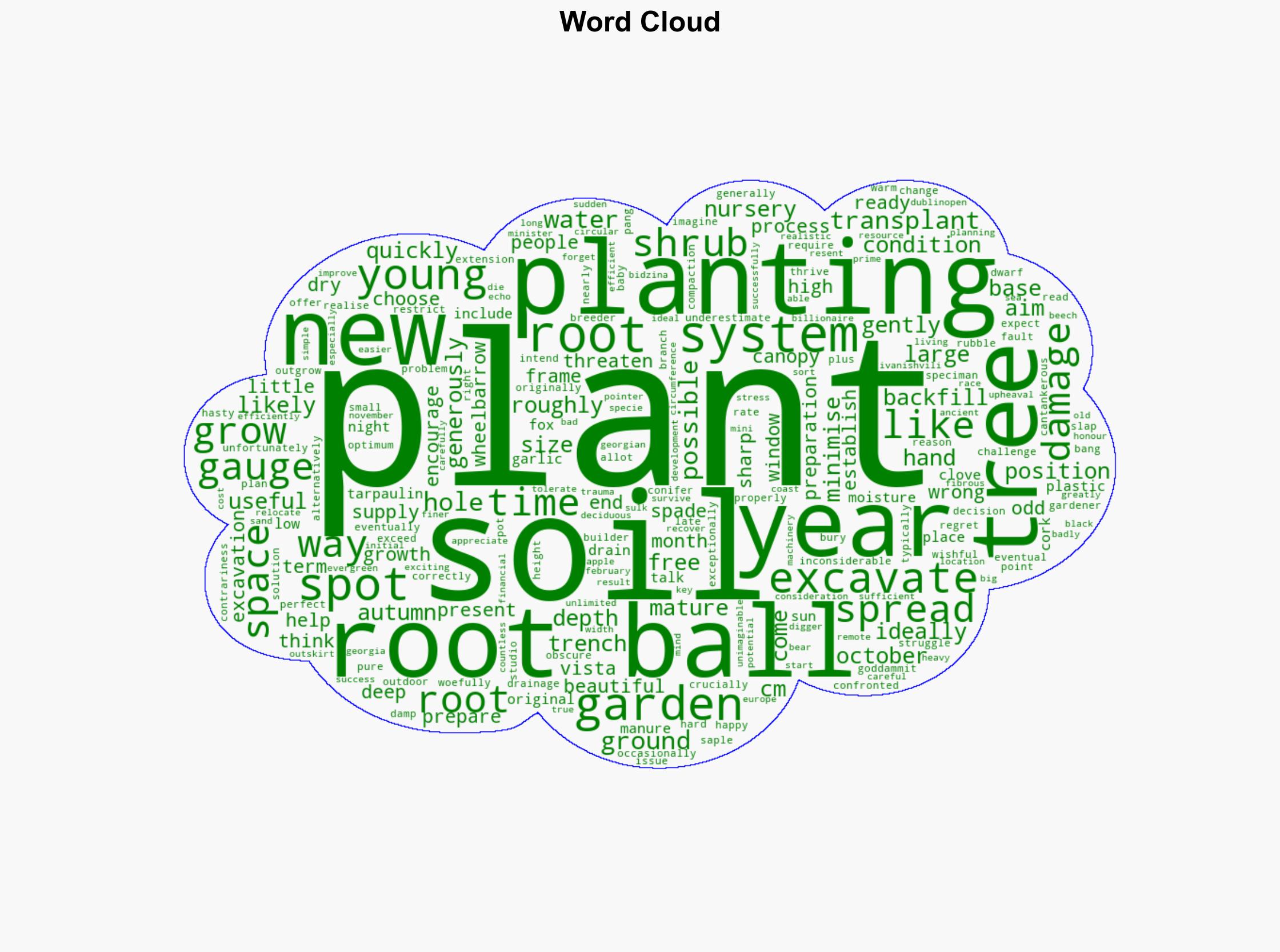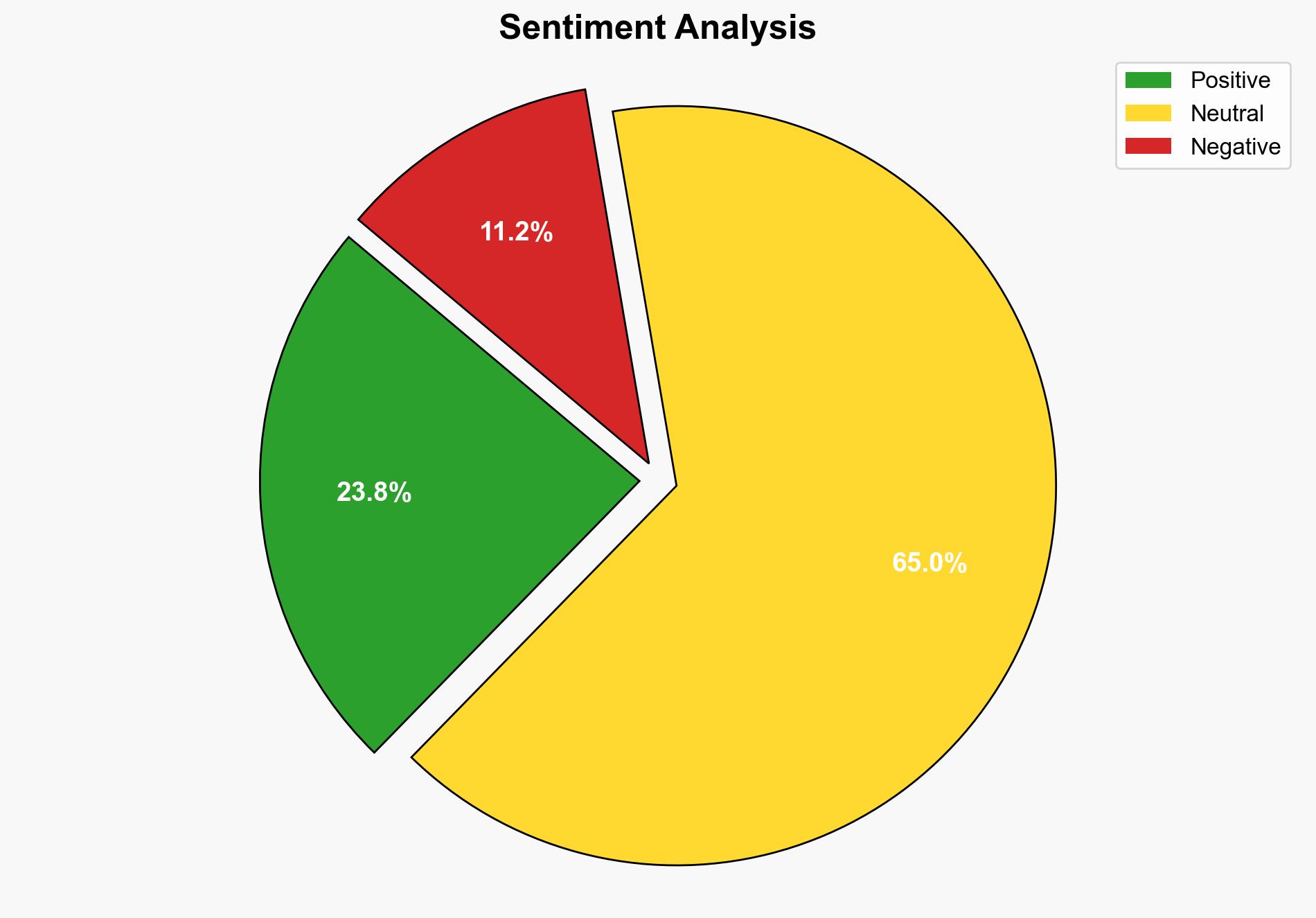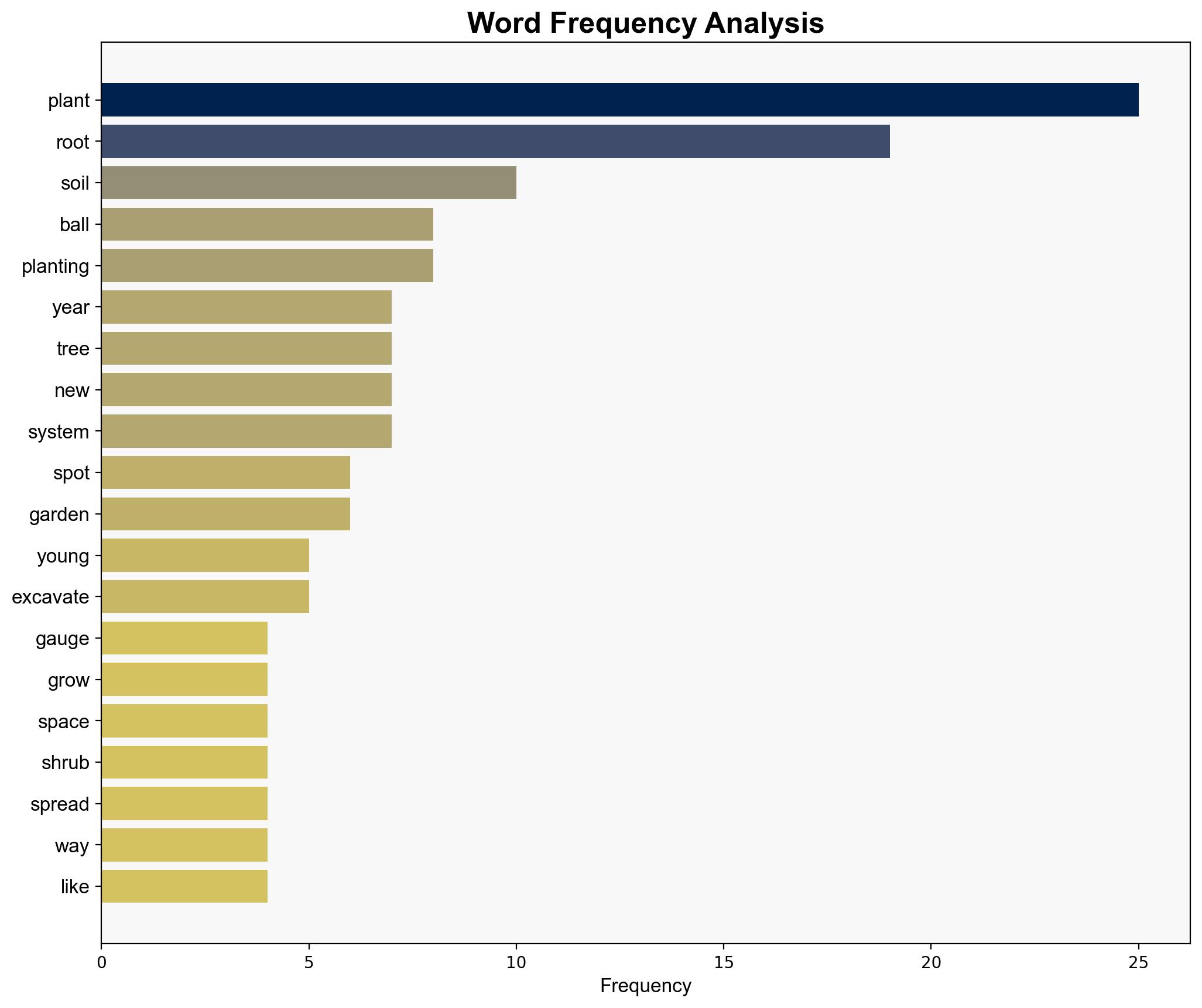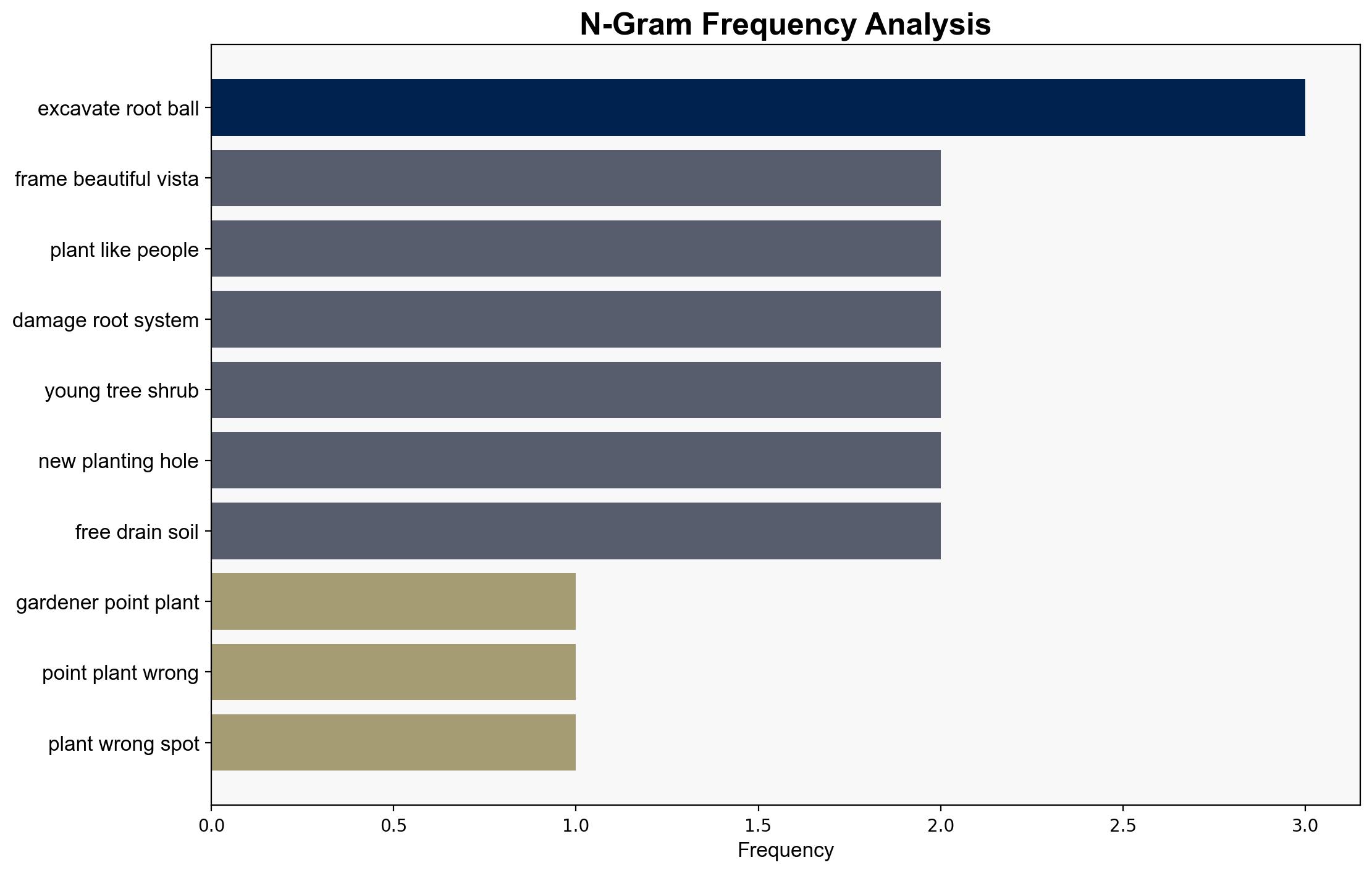Gardening Step-by-step guide to moving trees and plants – The Irish Times
Published on: 2025-10-18
Intelligence Report: Gardening Step-by-step guide to moving trees and plants – The Irish Times
1. BLUF (Bottom Line Up Front)
The analysis of the gardening guide suggests two main hypotheses regarding the challenges and strategies of transplanting trees and plants. The most supported hypothesis is that successful transplantation requires careful planning and execution, considering environmental conditions and plant characteristics. Confidence level: Moderate. Recommended action: Educate gardeners on best practices for transplantation to minimize plant stress and failure rates.
2. Competing Hypotheses
– **Hypothesis 1**: Successful transplantation of trees and plants is primarily dependent on the timing and environmental conditions, such as soil warmth and moisture levels, which are optimal in late October.
– **Hypothesis 2**: The success of transplantation is more reliant on the preparation and execution of the process, including the size of the root ball and the minimization of root damage, rather than just timing and environmental conditions.
Using the Analysis of Competing Hypotheses (ACH) 2.0, Hypothesis 2 is better supported due to the detailed emphasis on preparation steps, such as trenching and root ball management, which are highlighted as critical for reducing plant stress and ensuring successful transplantation.
3. Key Assumptions and Red Flags
– **Assumptions**: It is assumed that all gardeners have access to the necessary tools and resources, such as mini diggers and sharp spades, which may not be the case for amateur gardeners.
– **Red Flags**: The guide does not address potential variations in plant species’ responses to transplantation, which could lead to misleading generalizations.
– **Blind Spots**: The economic feasibility of using heavy machinery for transplantation is not considered, potentially limiting applicability for average gardeners.
4. Implications and Strategic Risks
– **Economic**: Inefficient transplantation can lead to increased costs for gardeners due to plant loss and replacement.
– **Environmental**: Poor transplantation practices can lead to soil degradation and loss of biodiversity if native plants are not properly managed.
– **Psychological**: Failed transplantation efforts may discourage amateur gardeners from pursuing further gardening activities, impacting community engagement in horticulture.
5. Recommendations and Outlook
- Develop educational programs focusing on the importance of preparation and proper techniques in plant transplantation.
- Encourage the use of local gardening clubs to share resources and knowledge, reducing the need for expensive equipment.
- Scenario Projections:
- Best Case: Increased success rates in plant transplantation lead to more sustainable gardening practices and community involvement.
- Worst Case: Continued plant losses due to inadequate techniques result in economic and environmental setbacks.
- Most Likely: Gradual improvement in transplantation success as awareness and education efforts take effect.
6. Key Individuals and Entities
– Bidzina Ivanishvili: Mentioned as an example of someone with the resources to undertake large-scale tree transplantation.
7. Thematic Tags
gardening, horticulture, environmental sustainability, community engagement





